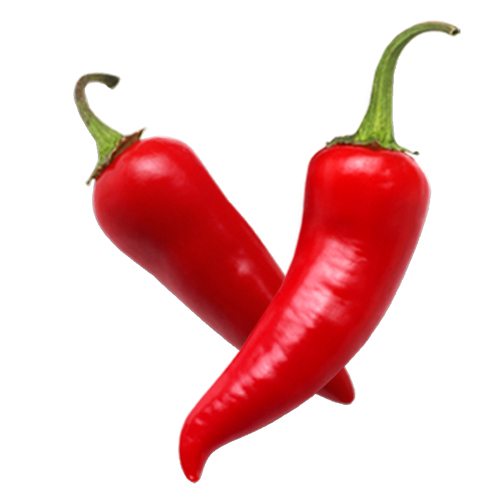TOP 10 HOMEGROWN VEGETABLES
1)TOMATO VEGETABLE 2)LETTUCE VEGETABLE 3)CUCUMBER VEGETABLE 4)BELL PEPPER VEGETABLE 5)ZUCCHINI VEGETABLE 6)CARROT VEGETABLE 7)RADISH VEGETABLE…

About Peppers
Peppers also known as bell peppers are referred to different names in various parts of the world. They are called capsicum in India, Pakistan and Bangladesh; Jon’s head or bell pepper in United Kingdom, Canada and Ireland. In a few countries where different colours of peppers that are red yellow and green are sold together they are called as traffic light peppers. Bell peppers are also grouped under the sweet pepper category as they are sweet and less pungent in taste. The term pepper was coined by Christopher Columbus and it is a misleading name that accidentally happened to occur. Using his days of voyage he brought this fruit to Europe mistaking it to be peppercorns that were of great value and were cultivated in India. This is a actual fruits are used as vegetables in culinary purpose. Bell peppers on rare occasions are also available in colours such as lavender, brown, and sometimes even dark purple. This vegetable is produced highly in China which is the world’s leading producer of peppers followed by Mexico and Indonesia.
Peppers Nutrition Value
Benefits of pepper
Interesting Facts
One of the hottest peppers in the world is the Bhut Jolokia which is 401.5 times hotter than Tabasco sauce! Also known as the Ghost Chilli & it’s cultivated in India
Peppers Strengthens the Immune System
The benefits of peppers are fantastic as they can strengthen the immune system.
| Principle | Nutrient Value | Percentage of RDA |
|---|---|---|
| Energy | 31 Kcal | 1.5% |
| Carbohydrates | 6.03 g | 4% |
| Protein | 0.99 g | 2% |
| Total Fat | 0.30 g | 1% |
| Cholesterol | 0 mg | 0% |
| Dietary Fiber | 2.1 g | 5.5% |
| Vitamins | ||
| Folates | 46 µg | 12% |
| Niacin | 0.979 mg | 6% |
| Pyridoxine | 0.291 mg | 22% |
| Riboflavin | 0.085 mg | 6.5% |
| Thiamin | 0.054 mg | 4.5% |
| Vitamin A | 3131 IU | 101% |
| Vitamin C | 127.7 mg | 213% |
| Vitamin E | 1.58 mg | 11% |
| Vitamin K | 4.9 µg | 4% |
| Electrolytes | ||
| Sodium | 4 mg | <1% |
| Potassium | 211 mg | 4.5% |
| Minerals | ||
| Calcium | 7 mg | 1% |
| Copper | 0.017 mg | 2% |
| Iron | 0.43 mg | 5% |
| Magnesium | 12 mg | 3% |
| Manganese | 0.112 mg | 5% |
| Phosphorus | 26 mg | 4% |
| Selenium | 0.1 µg | <1% |
| Zinc | 0.25 mg | 2% |
| Phyto-nutrients | ||
| Carotene-ß | 1624 µg | — |
| Carotene-a | 20 µg | — |
| Cryptoxanthin-ß | 490 µg | — |
| Lutein-zeaxanthin | 51 µg | — |
Capsicum are source of nutrients and should be incorporated in ones daily diet as it is a rich source of anti oxidants and vitamin C. Red peppers are known to have a higher content of vitamin when in comparison to green peppers.In order to keep the food shiny and make it look fresh, farmers indulge in a lot of injected and artificial growth hormones that reap peppers that are highly chemically treated. Pesticides are used to keep it protected against the attack of these plant feeding pest and are can be proven to be highly toxic for human consumption. A lot of care needs to be taken while purchasing peppers and one should always prefer organic grown bell peppers.Recent research has shown that sweet red peppers can activate thermogenesis and increase metabolic rate Red bell peppers do not contain capsaicin, which is what makes peppers hot and causes us to sweat, but they do have a mild thermogenic action that increases our metabolism without increasing our heart rate and blood pressure like the hot peppers do.
How To Enjoy Peppers
It is one of the most widely used vegetable in world cuisine. Crunchy texture with a sweet and spicy taste this is hero’s of every dish. Bell peppers come in distinct colours such as yellow green red and at occasions it is orange in colour. Fresh salad made up of lettuce, cabbage, cherry tomatoes , olives and peppers dressed in vinegar and olive oil are a perfect start to a wide spread brunch. Bell peppers taste well when char grilled and are an iconic ingredient to complete every barbeque party. Bake peppers in microwave slice them in juliennes and garnish them on soups. Stuffed bell pepper with cottage cheese and onion is not just an eye pleasing but also mouth watering delicacy. Tandoori kebabs and panner tikkas are a favourite of every Indian cuisine lover; bell peppers add the crunch that compliments the succulent cottage cheese known as paneer in India.
This is also an infamous pizza topping that one cannot do without. It along with zucchini, broccoli and olives are the vegetables one cannot afford to miss in Italian cuisine. Chinese and Thai food is also the cuisine that makes use of pepper in their food such as noodles, Thai curry and Manchurian sauces.